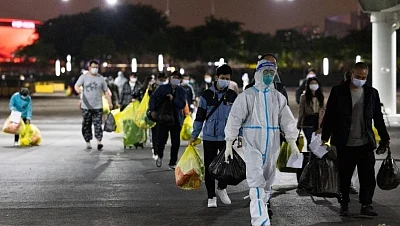China on Tuesday, 5 July, reported 353 active COVID-19 infections in the mainland, of which 112 were asymptomatic cases and 241 were symptomatic cases.
The overall case load is still small by global standards, but any further rise in cases could result in the imposition of strict prevention measures under the nation’s 'dynamic COVID zero' policy.
A significant cluster is developing in Shanghai, the country’s financial hub housing 25 million residents.
Official data showed that Shanghai had 24 domestically transmitted cases on 5 July, up from eight cases on 4 July.
At a news briefing on 6 July, Shanghai health official Zhao Dandan said, "Several Chinese areas are facing local outbreaks and infections have emerged at the community level in Shanghai, to which we should attach great importance.”
China's COVID Zero Policy
In the beginning of June, Shanghai lifted its two-month-long lockdown but has continued to test all residents from 9 of its 16 districts as well as from parts of 3 other districts.
The city’s plan to gradually reopen cinemas and performance venues from 8 July is still in place inspite of the recent surge, according to Jin Lei, an official at Shanghai's cultural and tourism authority.
Prominent, developing clusters elsewhere in the country have also led to the adoption of preventative measures in accordance with the 'dynamic COVID zero' policy.
Six local cases were detected in Beijing, the capital city, on 5 July. In response, officials urged transport hubs and hotels to maintain the strict implementation of preventative measures like checking the body temperature and negative test results of visitors.
Anhui, an eastern province housing one million people, which currently accounts for the most daily infections in the mainland, is still under lockdown, with 222 cases as of 5 July.
Xi'an, a northwestern city with a population of 13 million, imposed a week-long suspension of entertainment venues, restaurants, and big events, starting 6 July, in response to the detection of 11 local cases on 5 July.
“As of Tuesday, China had confirmed 226,176 cases with symptoms, including both local ones and those found among international travellers,” reported Reuters.
(With inputs from Reuters.)
(At The Quint, we question everything. Play an active role in shaping our journalism by becoming a member today.)
